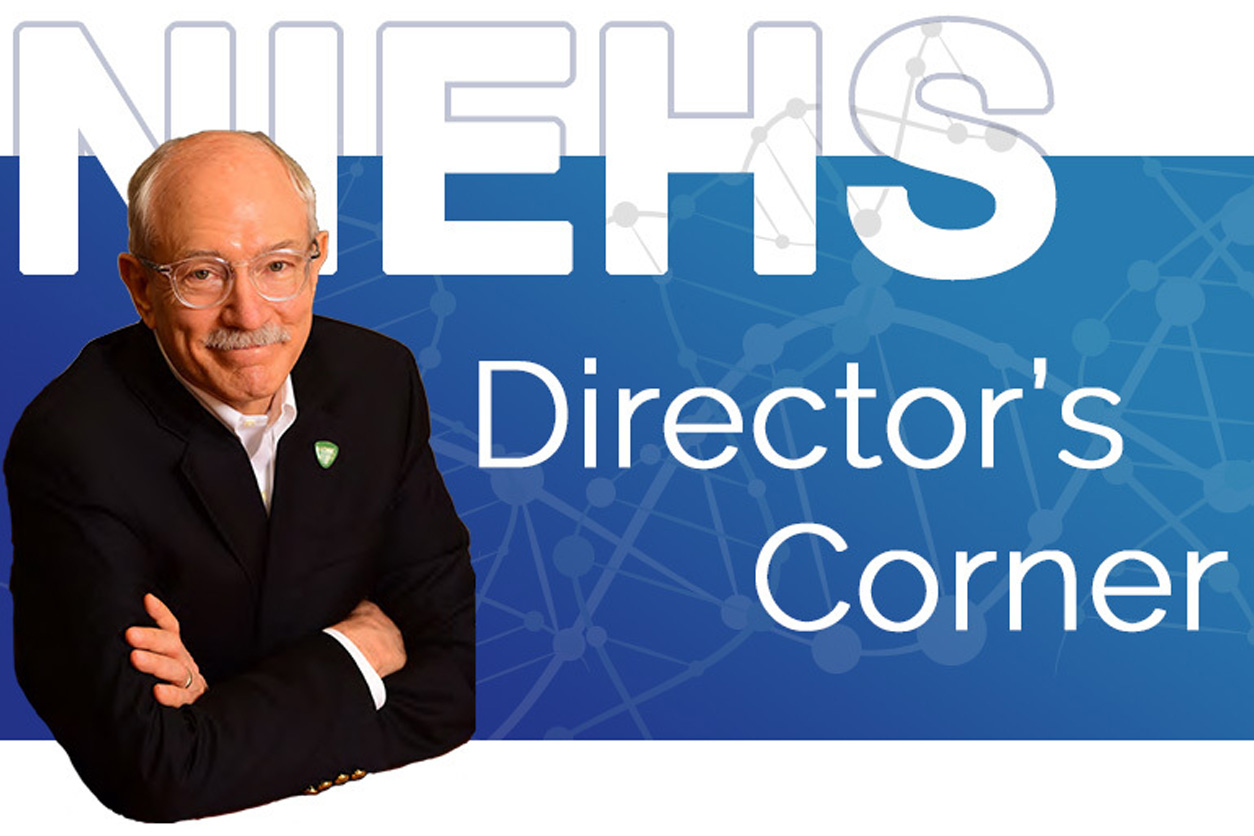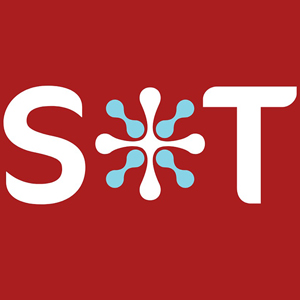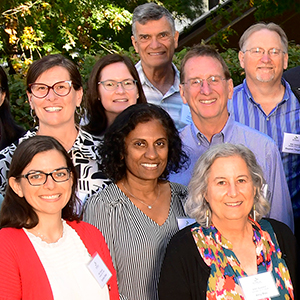
As director of NIEHS and the National Toxicology Program (NTP), one of my priorities is to increase scientific collaboration, which I believe is essential to innovation and to gaining insights on how our environment can influence human health. One area in which greater collaboration is vital is the development of what are referred to as new approach methodologies (NAMs). Those are research strategies and technologies that can expand knowledge about the molecular origins of human disease in a way that complements the use of experimental animals.
In recent years, government scientists, academic researchers, animal welfare groups, and others have sought to refine and reduce the use of mammalian models in experimental studies. A major goal is to spur development and adoption of NAMs, which are designed to complement traditional animal models. Proponents say that through technology and greater partnership, scientists can develop NAMs that lead to rigorous, reliable, and human-relevant findings.
Momentum is building. For example, last year, the National Institutes of Health Advisory Committee to the Director convened a working group to promote the development and use of NAMs in biomedical research. Many are excited about the potential for such methods to diversify the scientific toolkit and spark new discoveries. I look forward to reading the working group’s report, which is anticipated to be published this December.
Last month, I sat down with Nicole Kleinstreuer, Ph.D., to learn about her work as director of the NTP Interagency Center for the Evaluation of Alternative Toxicological Methods (NICEATM). Among her other efforts, Kleinstreuer seeks to bring relevant stakeholders together to address complex scientific challenges and boost adoption of NAMs among regulatory decision-makers and scientists.
Diversifying the scientific toolkit
Rick Woychik: Can you discuss the importance of NAMs?

Nicole Kleinstreuer: With NAMs, the idea is to promote the best science possible by using all of the tools in our technological toolbox. And that goal is the same whether we are talking about toxicological research, such as chemical safety and drug efficacy testing, or other types of biomedical research that examine biological mechanisms of disease, for example.
Traditionally, scientists have relied heavily on animal models, which have provided critical insights into biological pathways and toxicological mechanisms. But in recent years, there have been many advances in in vitro [cell-based] research, bioengineering technologies, microphysiological systems, chemical screening methods, computational approaches, and more.
I believe those and other new approach methodologies are ready to come to the forefront and stand on equal footing with animal models. They will not eliminate the need for experimental animals but can be used in a complementary fashion to provide even more insight into a variety of challenging research questions.
Mimicking human biology
RW: You provided a few examples of technologies that are advancing NAMs. Can you expand on a couple of those?
NK: Sure. Take microphysiological systems. They are complex cell-based cultures that mimic key physiological aspects of tissues or organs by incorporating microenvironments that align with those in the human body. So, for example, a particular system might incorporate things like flow and shear stress, appropriate pH and oxygen levels, biochemical and electrical stimuli, and other factors that replicate structural and morphological features we would see in animal-based models.
Another technology that I think is hugely exciting is what I call augmented intelligence, a slightly different definition of AI. It encompasses artificial intelligence and machine learning but also incorporates things like natural language processing, data analytics, mathematical modeling, and other computational tools. Augmented intelligence can enhance and support human intellect, leading to breakthroughs in, for example, our ability to accurately predict the toxicity of a previously untested chemical.
Zebrafish offer fresh insights
RW: I understand that NAMs also include nonmammalian species such as zebrafish. Can you discuss how they can advance toxicological research?
NK: Zebrafish represent a fascinating model organism because they are easily amenable to things like genetic manipulation. So, for example, you can have them express green fluorescent protein using a specific gene involved in blood vessel development. During early embryonic development, they are transparent, and that allows for really beautiful imaging studies. Researchers can actually look at the development of the embryonic vasculature, how the brain is vascularized, and how environmental exposures might disrupt that type of development.
Also, there has been a lot of work on understanding neuronal development and how that might be affected by exposure to environmental agents. Scientists can examine how zebrafish respond to different stimuli and compare baseline responses to responses after treatment with a potential neurotoxicant. That allows researchers to see clear differences in behavioral outcomes that might be more translatable to humans than a more simplistic cell-based method, which represents just one particular piece of biology or one particular mechanism at a time.
Small model organisms like zebrafish are a critical subcategory of NAMs. Again, there is so much potential for things like genetic manipulation that could allow toxicologists to better represent population diversity and genetic susceptibility in their studies. Potentially, that could help to mirror what we see in human populations while also allowing us to test the health effects of environmental chemicals on a scale that is not possible with larger model organisms.
Fostering collaboration
RW: Can you describe the work you do in NICEATM?
NK: I should start by first describing the Interagency Coordinating Committee on the Validation of Alternative Methods [ICCVAM], which NICEATM supports. ICCVAM was established by the U.S. Congress in 2000. It is comprised of 17 U.S. federal agencies that either require or consider chemical safety testing data. The agencies are interested in moving away from an exclusive reliance on animal studies by utilizing NAMs.
NICEATM is kind of the workhorse of ICCVAM because we provide it with scientific and operational support. Our team works on all of the different projects that ICCVAM agencies bring to the committee and identify as high priorities.
For example, during the last several years, we have had a number of projects supporting the U.S. EPA [Environmental Protection Agency]. Our team has worked to help them meet their goal of implementing NAMs and significantly reducing, if not fully replacing, the use of animals for certain acute toxicity tests, screens for endocrine disrupting chemicals, and more.
Our team also aims to democratize access to highly curated data and computational workflows that help scientists who may not be computationally savvy but want to apply NAMs to their work. We have put a lot of effort into a platform called the Integrated Chemical Environment, which is a high-quality curated database and dashboard that gives toxicologists the tools they need to develop and evaluate NAMs. We are working hard on an updated version that will come out in March, just ahead of the annual Society of Toxicology meeting. It will include a new search results interface with interactive visualizations and new data sets like human exposure biomonitoring data.
Also, NICEATM is housed within the NIEHS Division of Translational Toxicology [DTT] Predictive Toxicology Branch. We support DTT by providing expertise in computational toxicology and NAMs, and we partner in the federal Tox21 program. That program aims to advance high-throughput tests and NAMs to assess the potential health effects of environmental agents more rapidly. So, we wear a lot of hats, but in general, we kind of serve as the U.S. federal resource for coordinating and supporting alternative methods efforts across agencies.
Expanding scientific knowledge
RW: Any final thoughts for Environmental Factor readers?
NK: Computational capabilities have expanded exponentially over just the last five to 10 years. We have a lot of big data sets, and people are increasingly recognizing the need to make data FAIR, meaning findable, accessible, interoperable, and reusable.
Going forward, we want to apply all of these computational tools to process all of the data that we are getting both from animal models and NAMs. I believe these efforts will allow us to find complex patterns and insights that can inform our experimental designs and provide more scientific knowledge than we can get from just animal models alone.
(Rick Woychik, Ph.D., directs NIEHS and the National Toxicology Program.)









